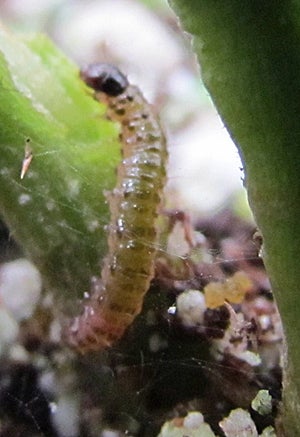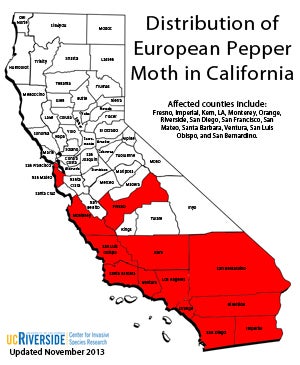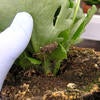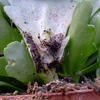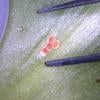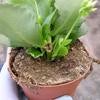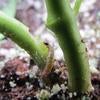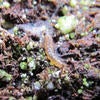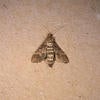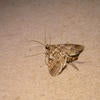European Pepper Moth, Duponchelia fovealis
The Situation: The European Pepper Moth, Duponchelia fovealis Zeller, is endemic to the Mediterranean region and the Canary Islands, but it is now established in many countries in Europe, the Middle East and Africa. It has a broad host range, but it is a serious agricultural pest of peppers and strawberries in Europe and aquatic ornamental plants as well. It is uncertain how the moths entered the U.S., but in the summer of 2010 it was considered established in at least 15 states, which include Alabama, Arizona, California, Colorado, Florida, Hawaii, Minnesota, Mississippi, New York, North Carolina, Oklahoma, Oregon, South Carolina, Texas, and Washington. The threat that this insect poses to U.S. agriculture is uncertain, but it has become a significant pest of ornamental plant production, especially in potted poinsettia production. The potential exists, however, for the European pepper moth to be a very significant threat to major agricultural production areas in states such as California, Arizona, and Florida. One of the major problems in detecting this insect is that it is very difficult to detect until the numbers build to high levels and begin to cause significant damage. The caterpillar and egg stages are very cryptic, which means that this insect is easily moved on potted stock plants or cut foliage. This poses a great challenge for regulators that would not like to see this pest spread by the ornamental plant trade.
Description: The European Pepper Moth adult is 9-12 mm long with a wingspan of 19-21 mm. The abdomen of the male is longer and narrower than that of the female. Adults turn their abdomens up vertically, but this is much more pronounced in the males. The moth occurs in shades of brown with grey. The forewings show distinctive patterns and have two transverse golden-brown bands, the lower with a pronounced finger-shaped curve pointing backward. The life span for the adult is from 1 to 2 weeks. During that time, the female may lay up to 200 eggs which are white when first laid, but darken to red or reddish orange when mature. They may occur singly or in small batches on plants and other surfaces. Larvae are light to dark brown with a dark brown head capsule. They produce silk and may be found in association with webbing along the soil surface and in the crown of the plant. Larvae pupate inside 15-19 mm long cocoons composed of webbing and detritus or soil particles. The cocoon is usually attached to the undersides of leaves, the edge of a potted plant, or the undersides of the pots. Adults emerge in 1-2 weeks. In greenhouses in Southern California, there may be multiple generations throughout the year.
Damage: European Pepper moth larvae can damage roots, leaves, flowers, buds and fruit. In some crops, such as roses, they will feed primarily on crop debris such as fallen leaves. In other crops, chewing damage may be seen on the undersides of leaves, resulting in leaf necrosis (dead spots), and on stems where it sometimes results in stem girdling. In southern California, damage has been observed on gerbera, echinacea, kalanchoe, begonia and poinsettia.
Monitoring: It will be important to monitor for this pest, especially if there is a susceptible host plant being produced. In many cases in ornamental plant production, the mere presence of the pest will require prophylactic treatment to prevent damage and movement of the pest. Detection can also be used to coordinate biological and chemical control measures.
Water traps seem to be the most effective means of capturing the adults, followed by delta traps and funnel traps. These methods require the use of a pheromone, which is available in the U.S.
Biological Control: Products containing the bacterium Bacillus thuringiensis are effective when applied preventatively against early instars. Generalist predators such as the soil-dwelling predatory mite Stratiolaelaps miles, and the rove beetle Atheta coriaria also can be effective, and both are commercially available in the United States. Combined releases of several species of the egg parasitoid Trichogramma have been shown to be effective in crop production facilities and are also commercially available in the U.S.
Cultural Control: Good sanitation is important, including removal of plant refuse, weed control, and growing container plants on cleanable surfaces. This insect is a scavenger and will feed on almost any decaying material. Removal of plants with obvious webbing will remove larvae and pupae and prevent infestation of neighboring plants.
Chemical Control: Control measures for adults include conventional registered pesticides applied where the adult will come into contact with them. Trimming off leaves that lie on the soil surface will mean less shelter for larvae and better pesticide coverage. When larvae are more mature, they are much more difficult to control because of the protection offered by webbing. For best effectiveness, persistent applications of effective products using a heavy application or large droplet size and a directed spray may be necessary. Aerosols or fogs applied in protected culture just before adults begin to fly at night also will be effective
A preventative treatment of Bt or spinosad on smaller plants and cuttings will kill larvae as they hatch and begin to feed, but the pesticide has to be applied at the feeding site. Ultra-fine petroleum oil has a significant impact on hatchlings and acephate is effective against late stage larvae. Pyrethroids are also a good choice for larval control.
More Media on the European Pepper Moth
University of Maryland: Greenhouse IPM Pest Alert: European Pepper Moth
UC Riverside: Impact of European Pepper Moth on Ornamental Plant Production and Agriculture
Center for Invasive Species Research, University of California, Riverside
Text provided by James A Bethke and Loretta M. Bates, Ph.D.
Photos provided by James A. Bethke and Bryan Vander May
Jim Bethke, Floriculture and Nursery Farm Advisor
bethke@ucr.edu
